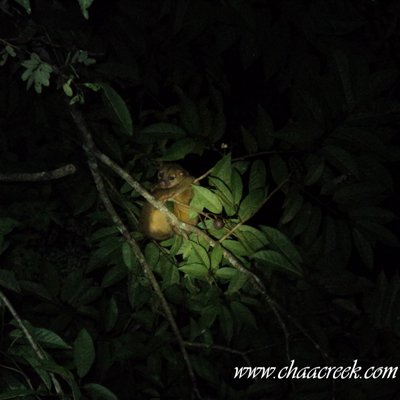The Kinkajou can be found in the Americas with its habitat spanning from northern Mexico to the south of Brazil, nearly half the continent. It is also commonly referred to as the Honey Bear, night walker or Potto.
This creature is common and widespread throughout evergreen and deciduous forest as well as second growth, day scrub and agricultural areas. It has brightly shinning eyes and moves noisily through the trees, making it easily detected. The Kinkajou is a friendly, social animal rarely exhibiting aggressive behavior. Kinkajous and all wildlife are unfit as household pets not only because removing them from their natural habitat is an unnatural and cruel act but also because they are unpredictable, by definition not domesticated, can cause health risks and are a vital part of their eco system.
Kinkajous spend the majority of their time in the upper layers of the forest canopy. Although they are related to the racoon they can be easily mistaken for monkeys as they move around from limb to limb with their long tail. The majority of their diet consists of fruit but they also consume quite a bit of honey from bee hives and use their long tongues to extract termites, and ants and insects from their nests.
An interesting observation about their young is that they are born blind and remain so for at least ten days. Births usually occur during the summer after a three month gestation. In Mexico the kinkajou is called a micoleon which translates from Spanish as “lion monkey”. In Guatemala many call it la llorona referring to its howling and screaming sounds; and in the Maya language, Mam, the kinkajou it called the tacuazin.
These friendly and fury little creatures are commonly seen in nature reserves, parks and archeological sites by tourists throughout the year.
Photography by natrualist guide: Allan Chan
